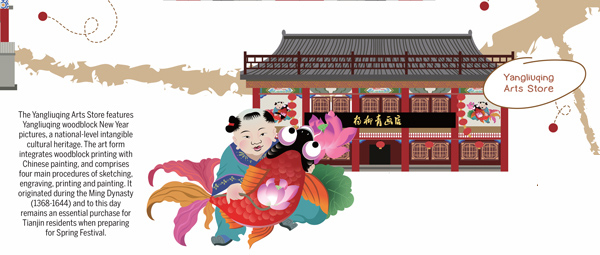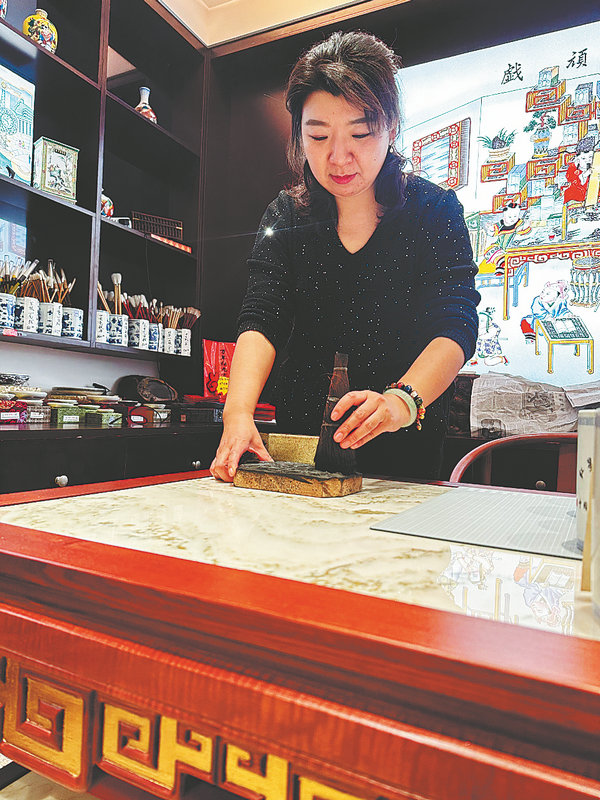

After purchasing the cassette, he paid his first-ever visit to the Yangliuqing Arts Store for a casual browse. Unbeknownst to him then, a few years later, in 1989, he would embark on a 35-year career there.
The store sells and displays Yangliuqing woodblock New Year pictures, a form of traditional decoration that combines woodblock printing with painting.
Comprising the four main procedures of sketching, engraving, printing and painting that require the collaboration of specialized artisans, it originated during the Ming Dynasty (1368-1644) and has become representative of Tianjin's culture and customs.
The pictures have long been a necessary purchase for Tianjin residents preparing for Spring Festival. Their subjects include motifs depicting folk lifestyle, women and children, fictional stories, traditional opera, Chinese mythology, as well as landscapes and flowers.

"Around a month before Spring Festival, Tianjin residents will do their New Year shopping, including buying these New Year pictures. They all carry propitious meanings and are traditionally believed to bring blessings to the household," says Su Liyan, an inheritor of the pictures' printing technique.
"For locals, it is now an artistic medium for a wider range of social occasions. They gift them to friends on their birthdays or to celebrate weddings. We have different themes suited to different occasions, but all with auspicious connotations."
While these pictures are still popular among the locals, the store is also seeking innovative ways to combine the tradition with contemporary life, producing a variety of products that serve as suitable souvenirs for tourists.
"We have been drawing inspiration from our heritage. Our latest merchandise includes bookmarks, coin purses and fridge magnets adorned with imagery found on the ancient pieces. They have proved popular among the younger crowd," Su says.
"For tourists, the pictures might not be easy to carry. With these products, all visitors to the cultural street can take something featuring our intangible cultural heritage back home with them."